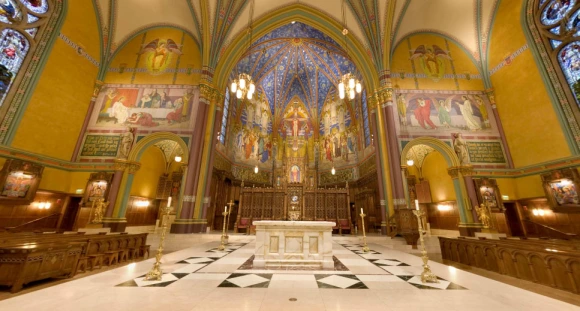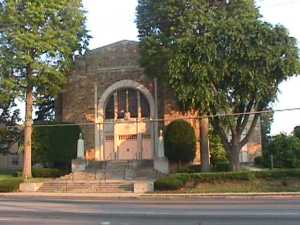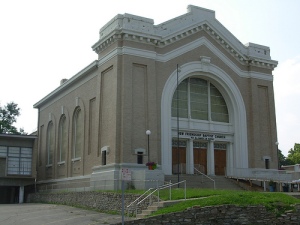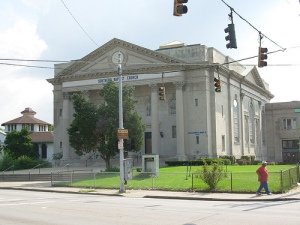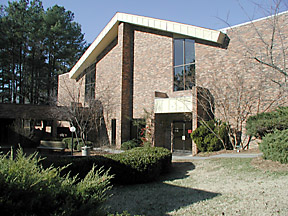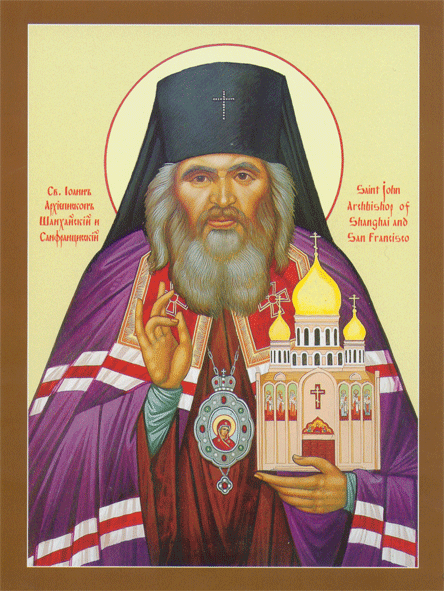
[UPDATE: I’ve revised the post that originally appeared here so that I can use this analysis more effectively in the classroom. The original post included a brief discussion of evangelical attitudes toward Romney, a subject I’ve analyzed at greater length for Religion & Politics. I’ve cut that discussion out of the revised post and expanded the points that remain.]
A few days ago, I responded to a Religion Dispatches post by Joanna Brooks about media coverage of Mitt Romney’s Mormonism. For the past seven months, I’ve been trying to pitch my own analysis of that topic to various major newspapers and online magazines. Since that’s proved a dead-end, I’m giving up and posting a version of my analysis here instead.
What does Romney’s Mormonism Symbolize for Voters?
For a long time, the question that loomed largest in discussions of Mitt Romney’s Mormonism was, “Will conservative evangelicals vote for a Mormon?” Now that Romney has become the presumptive Republican nominee, the evangelical question is receding, and the focus of Romney’s “Mormon problem” has shifted. The question now is whether, and how, Obama supporters might use Romney’s Mormonism to advantage—either to woo independents and other undecideds away from Romney or to fire up the Democratic faithful to donate money and time to defeat him.
It is unlikely that religion will be a major issue in the campaign—on the surface, at least. Because making an issue of Romney’s religion would expose the Obama campaign or pro-Obama PACs to charges of bigotry, economic issues will likely remain the centerpiece of Democrats’ anti-Romney campaigns.
But there are media venues other than stump speeches and campaign ads in which Obama supporters can try to turn Romney’s religion to their advantage. Large segments of the American public have negative associations with Mormonism. Right or wrong, those associations turn Mormonism into a symbol. By reminding voters that Romney is Mormon, and by reminding them of the negatives that Mormonism has come to stand for, Obama sympathizers can paint a negative impression of Romney in a safely subtextual way. They can do this in editorials, in late-night comedy bits—even in news reporting.
We have already seen enough media treatment of Romney’s religion to predict how Mormonism will function as a symbol in the 2012 general election. Three major themes have emerged.
1. Mormon = social conservative
Mormons themselves have promoted this association by advertising their traditional family values and moral rigor. A peculiar measure of Mormons’ success at building a conservative public image is the The Book of Mormon musical’s parody of that image.
With Mormonism’s conservative public image in place, Romney’s Mormonism can function as a badge signaling opposition to abortion or same-sex marriage, much as Rick Santorum’s Catholicism did, or Michele Bachmann’s evangelicalism. Romney himself invoked his religious identity as he wooed Republican values voters during the primaries, spinning his Mormonism into the more generic brand image of a “person of faith” who champions “Judeo-Christian” values in public life. Among those values, he wants social conservatives to know, he counts the right to life and an exclusively heterosexual definition of marriage. Some pro-life conservatives have voiced doubts about Romney’s opposition to abortion. On the other side of the issues, Planned Parenthood and the Human Rights Campaign accept Romney’s current claims about where he stands; they are, for that reason, rallying against him.
Ironically, while Romney’s political career in Massachusetts gave values voters reason to doubt his social conservatism despite his religious identity, the inverse is true for liberal critics: Romney’s religious identity gives them grounds to paint him as a committed social conservative despite his more moderate record in Massachusetts. Such is the rhetorical effect when Michael Kranish and Scott Helman, authors of The Real Romney, explain that Romney’s membership in “the Mormon Church meant accepting a code of conduct that placed supreme value on . . . strong heterosexual families, in which men and women often filled defined and traditional roles.” Subtext: The man doesn’t believe in gay rights or gender equality. The same book popularized anecdotes in which Romney, as a church leader, pressed one pregnant unmarried woman to give her baby up for adoption and another woman not to terminate a life-threatening pregnancy. These stories insinuate that, flip-flopping regardless, the “real Romney” does not respect a woman’s right to choose—and they produce that effect by linking him to his Mormonism.
Mormonism does not produce this symbolic effect for all Mormon politicians. Although Democratic Senate Majority Leader Harry Reid is a Mormon with a relatively conservative record on abortion and gay marriage (at least until recently), he is not as strongly linked with Mormonism in national media as Romney is. In part this is because neither Republicans nor Democrats stand to gain anything by painting Reid as a social conservative; neither side therefore stands to gain anything by reminding the public of his Mormonism. Romney, because he is a Republican, presents a very different case.
2. Mormon = insufficiently pluralist
In recent months, much commentary has been generated around news stories that paint Mormons as intolerant or insensitive toward minority groups. These include stories about racially discriminatory teachings in Mormonism, vicarious baptisms performed in the name of Jews killed in the Holocaust, and Romney’s hazing of a gay student at his prep school. Not incidentally, perhaps, these stories involve minority groups that Democrats would like to keep securely in their camp: the black vote, the Jewish vote, and the gay vote.
The stories about Mormon racism and vicarious baptisms centered on the church, not on Romney; but they came, inevitably, to be connected to him. Lawrence O’Donnell has been particularly insistent about holding Romney accountable for his church’s past teachings and policies toward people of black African ancestry. Although Romney himself has not said or done anything to attract charges of racial bias (yet), painting his religion as racist allows critics such as O’Donnell to cast doubts on the candidate by extension. Something similar happened when Holocaust survivor Elie Wiesel called on Romney to press his church to halt vicarious baptisms. For Jews, this Mormon practice evokes the memory of forced conversions under Christian rule in centuries past; in effect, then, Wiesel was challenging Romney to show that he is not anti-Semitic. More broadly, the baptisms controversy reminds voters that Mormons are religious exclusivists, who believe their church alone provides the path to salvation. Many Americans find such exclusivism uncomfortable because it strikes them as intolerant—an impression that can then spill over to Romney.
The hazing incident involves Romney directly and therefore has the greatest potential for damage. This controversy is especially toxic coming in the aftermath of the “It Gets Better” campaign, which heightened public awareness about bullying and gay teen suicide. The hazing story might have been somewhat less potent had it broken during Romney’s 2008 campaign, prior to both “It Gets Better” and the outrage over Mormon support for California’s Proposition 8. Now, though, the incident works as an ugly symbol of Mormon opposition to homosexuality, a salient issue for “millennial” voters.
Romney has not been alone in fielding religion-related charges of racism, homophobia, or intolerance. Michele Bachmann’s connection to an ex-gay ministry attracted criticism and satire during her 2012 primary run. In 2008, John McCain faced embarrassing questions about the anti-Catholic and anti-Semitic preaching of evangelical endorser John Hagee, while Barak Obama distanced himself from remarks by pastor Jeremiah Wright that smacked of black separatism. Like Romney, but in different ways, these candidates had to manage religious associations that risked giving the impression they did not support pluralist values.
3. Mormon = fringe
Commentators speaking from various points along the political spectrum have pointed to unconventional Mormon beliefs to insinuate that Romney is a fringe figure and perhaps not entirely rational. A New York Times editorial by Yale litterateur Harold Bloom questioned whether Mitt Romney can govern as the American people’s representative if he believes that he is destined to become a god. Evangelical journalist Warren Smith challenged the decision-making capabilities of a president who believed in “an American history that is in many particulars completely unsubstantiated and in others demonstrably false,” a reference to the Book of Mormon’s narrative of ancient Israelites colonizing the New World. Would-be Romney competitor Fred Karger, a gay Republican running a quixotic campaign for the presidency, maintains a website, “Top 10 Craziest Mormon Beliefs.”
Romney routinely insists that questions about peculiar Mormon doctrines are irrelevant to his qualifications for public office. But the rhetorical force of such questions—and the reason Romney doesn’t want to field them—is that they cast him as standing outside the norm in American religion, or even outside the realm of common sense. For voters of a rationalist bent, these questions very much bear on Romney’s capacity to govern. Also, voters may be less inclined to choose as the figurehead of the American nation an individual whom they perceive as representing a fringe group. (Conversely, a Romney win in November would symbolize that Mormons have moved in from the fringe.)
Romney is not alone, again, in having unconventional beliefs used against him. Recall the controversy generated in 2008 by video of a Pentecostal minister praying over Sarah Palin to protect her against witchcraft. In that same year’s Democratic primaries, Dennis Kucinich was quizzed during a televised debate about having claimed to see a UFO. In each case, voters were being asked: Do you want someone who believes that to lead the country? Undoubtedly, critics will continue to pose the same question about Romney. The strategy is risky, though. The same aversion to intolerance that makes voters uneasy about Mormons’ religious exclusivism could also make voters uneasy about attacks on Mormon doctrines—except where they see those doctrines as threatening to legislate morality or restrict the rights of minorities.
For six years, Romney has resisted being defined as “the Mormon candidate”—much as Obama never wanted to be reduced to “the black candidate.” Inevitably, though, Romney’s Mormonism has symbolic force. The fact that he is slated to become the first Mormon presidential nominee of a major political party symbolizes growing acceptance for Mormons in American society. At the same time, Romney’s Mormonism can alienate voters depending on what meanings they attach to his religion. The knowledge that “Romney is Mormon” will hurt him among some voters if they understand that statement as equivalent to: “He’s anti-choice.” “He opposes gay rights.” “He may be racist.” “He’s intolerant of other faiths.” “He isn’t rational.” “He’s fringe.” Some of those are perceptions that both Romney and his critics would like to cultivate: for example, the perception that he opposes Roe v. Wade, which gives pro-life voters reason to rally to him and pro-choice voters reason to reject him. Others are perceptions that Romney would like to dispel—and that his critics will therefore labor to reinforce in voters’ minds between now and November.

